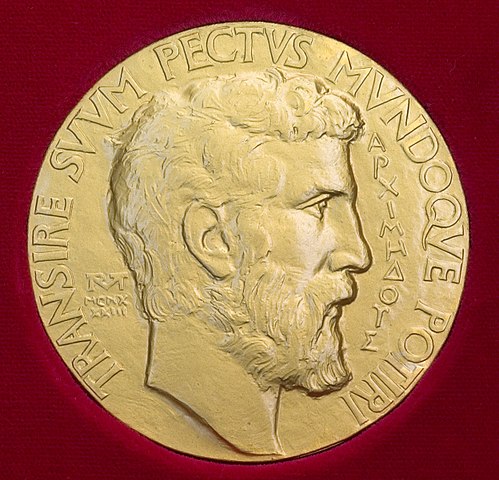
What is the Fields Medal? It is a four-yearly prize given to mathematicians under the age of 40. It is the mathematical equivalent of the Nobel Prize. It is named after a Canadian mathematician called John Charles Fields. The prize is a medal, similar-looking to the Nobel Prize medal, and 15,000 Canadian dollars, which, as of February 2024, is $11,150.
The first Fields Medals were awarded in 1936, but the idea was conceived over 10 years before. In 1924, The International Congress of Mathematicians was held in Toronto. The mathematicians decided that they wanted to start giving a gold medal to recognize outstanding mathematical achievements. John Fields was a professor at Toronto University at the time and he desperately wanted to raise the status of mathematicians amongst academics in North America. In Europe, mathematicians were treated highly, but that wasn’t the case in North America. Also, for several reasons, there was a rift in the international mathematics community. The Europeans were wary of the North Americans and everyone was wary of the Germans. This probably had something to do with the fact that World War 1 had only been over by about 6 years. Fields wanted to remedy all of these situations. He worked tirelessly, and he managed to get the International Congress of Mathematics to come to Toronto and he was one of the speakers. He also served as the secretary of that congress. Fields wanted the medal to be a way of recognizing a contribution to mathematics, but he also wanted it to be a way to encourage mathematicians who were just starting. In order to accomplish these goals, he suggested that the medal was only given to people who are under 40. He possibly saw this as a difference to the Nobel Prize, which always appears to be awarded to elderly people. Surprisingly, though, the average age of Nobel Prize winners is 44.1 years.
The Fields Medal is decided by a committee of about 10 mathematicians, although the first committee only had five people in it. It is awarded every four years because that is how often the International Congress of Mathematicians convenes. John Fields worked hard to initiate the medal, but, unfortunately, he grew sick and died in 1932, before the first medals were awarded. In his will, he left $47,000 as a fund to start the medal. Because of his tireless work and the donation to start the medal, it was named after him.
Winners of the Fields Medal receive 15,000 Canadian collars and a gold medal. It is 169 g of 14 karat gold. Each medal costs about $4000. On the front side is Archimedes with the word ΑΡXIMHΔΟΥΣ, which means “of Archimedes” in Greek. It also has the Latin “TRANSIRE SUUM PECTUS MUNDOQUE POTIRI”, which means “to pass beyond your understanding and make yourself master.” And “CONGREGATI EX TOTO ORBE MATHEMATICI OB SCRIPTA INSIGNIA TRIBUERE,” which means “the mathematicians who gathered from the whole world awarded this metal because of outstanding writing.”
After 1936, World War 2 happened and the medal wasn’t awarded again until 1950. There have been 64 winners of the Fields Medal over the years. Only 2 of them have been women. Maryam Mirzakhani won in 2014 and Maryna Viazovska won in 2022. I guess that shows that schools need to work harder on getting girls to study math.
The Fields Medal is very prestigious, but it is not always considered to be the highest medal for mathematicians. There is another prize called the Abel Prize, which is awarded every year by the King of Norway. It was thought up back 1899 and was specifically created because the Nobel Prize doesn’t have a category for mathematics. Nobel, who created the Nobel prize, didn’t consider mathematics to be a practical subject and too theoretical. He wanted to give prizes for people who he saw benefitting mankind. Surprisingly, the first Abel Prize wasn’t awarded until 2003. King Oscar II, the king of Norway, put up the money for a prize in 1902 and two mathematicians were working out the rules when the union between Sweden and Norway was dissolved. That, plus two world wars, and many other things, cause people to forget. The idea was raised again in 2001 and the first prize was awarded in 2003. Prize winners get a medal and about $700,000. And this is what I learned today.
Image By Stefan Zachow for the International Mathematical Union; retouched by King of Hearts – File [1], Public Domain, https://commons.wikimedia.org/w/index.php?curid=2277414
Sources
https://www.fields.utoronto.ca/about/fields-medal
https://en.wikipedia.org/wiki/Fields_Medal
https://www.mathunion.org/imu-awards/fields-medal
https://en.wikipedia.org/wiki/Abel_Prize
https://en.wikipedia.org/wiki/Nobel_Prize_controversies#AnchorNoMathematics
https://en.wikipedia.org/wiki/Maryam_Mirzakhani
https://en.wikipedia.org/wiki/John_Charles_Fields
